 IT landscape is transforming very fast, getting better, faster and cost efficient enabling business become more innovative and competitive while changing the social life dynamics. This is caught in the swirl of increasingly complex information with increasing infrastructure that is often ill equipped to handle. Infrastructure is moving away from brick and mortar to virtualization to software defined model. IT Skill dynamics are also getting adjusted while addressing the requirement that is changing every moment, numbers of specialists demand is reducing while number of generalists is increasing, please read my blog on this subject http://www.techmanthan.com/index.php/2015/07/03/trend-in-it-skill-genralists-vs-specifics/. In this article I will attempt to summarize basic component of Infrastructure as a service and highlight how software defined infrastructure (SDI) helps address that. Business and technocrats must be aware of fundamentals rather than getting drifted away with the hype (as it sounds) of software defined everything.
IT landscape is transforming very fast, getting better, faster and cost efficient enabling business become more innovative and competitive while changing the social life dynamics. This is caught in the swirl of increasingly complex information with increasing infrastructure that is often ill equipped to handle. Infrastructure is moving away from brick and mortar to virtualization to software defined model. IT Skill dynamics are also getting adjusted while addressing the requirement that is changing every moment, numbers of specialists demand is reducing while number of generalists is increasing, please read my blog on this subject http://www.techmanthan.com/index.php/2015/07/03/trend-in-it-skill-genralists-vs-specifics/. In this article I will attempt to summarize basic component of Infrastructure as a service and highlight how software defined infrastructure (SDI) helps address that. Business and technocrats must be aware of fundamentals rather than getting drifted away with the hype (as it sounds) of software defined everything.
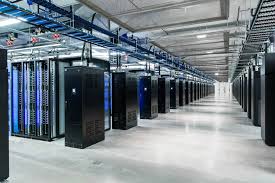 As Gartner emphasizes to get moving on with Software-Defined Architecture or get left behind.Infrastructure modeled after “Brick and Mortar” could not have been sustained on will not sustain to address ever increasing growth of data, changing business dynamics, culture of innovation, promptness in service delivery etc. while adopting BYOD as corporate culture, Virtualization as a core technical solution and Software Defined Everything as service delivery framework in IT ecosystem. Let’s put Cloud computing, IaaS, Virtualization, SDI etc. in the right perspective to be able to create distinction about each subject area and highlight underlying components for each of them.
As Gartner emphasizes to get moving on with Software-Defined Architecture or get left behind.Infrastructure modeled after “Brick and Mortar” could not have been sustained on will not sustain to address ever increasing growth of data, changing business dynamics, culture of innovation, promptness in service delivery etc. while adopting BYOD as corporate culture, Virtualization as a core technical solution and Software Defined Everything as service delivery framework in IT ecosystem. Let’s put Cloud computing, IaaS, Virtualization, SDI etc. in the right perspective to be able to create distinction about each subject area and highlight underlying components for each of them.
IaaS (Infrastructure as a Service) is one of the most crucial service models or components of Cloud architecture that creates a framework for the maximum utilization of compute, storage, network etc. thereby addressing the infrastructure requirement viz. servers, capacity, storage demand, application high availability etc. efficiently. Virtualization is a component of cloud architecture that helps set up infrastructure by leveraging underlying physical resources viz. host servers, OS, storages and abstracting infrastructural slices in the form of VM, vIO, vCPU to address guests requirements. SDI or Software Defined Infrastructure is modeled after Software Defined Anything concept wherein unit of infrastructure delivery can be designed, defined and executed in a structured, programmable and serviceable manner.
There are other examples of software defined anything viz. SDDC (Software defined data Center), SDS (Software defined storage), SDN(Software defined networking), SDI etc. SDxxx is an approach to address the implementation of service models such as IaaS, PaaS, SaaS.
Let’s dig out what SDI should offer to address set up IaaS in any Infrastructure establishment. As we know, Social, mobility, big data, advance analytic, cloud etc. offer us competitive advantage. A portfolio of infrastructure automation and virtualization software as part of our software-defined infrastructure (SDI) solution empowers our mobile workforce with greater access to information. Let’s see how?
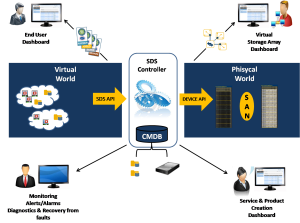 Automate storage provisioning: As we know (wearing the hat of Storage Admin.) that Storage provisioning is done in steps in a specific order. The storage must be configured for optimum SAN performance, Logical unit numbers (LUNs) must be assigned within the network, data storage and recovery routes should be available to all users when needed. Alternate routes must be put in place to keep the SAN functional in the event of failure; future expansion must be factored in as well. After everything has been connected and all the programs have been installed, the entire SAN must be tested before sensitive and valuable data is committed to it. SDI is here to address this whole manual repetitive process by what we call auto-provisioning. Programs can reduce the time required for the storage provisioning process.
Automate storage provisioning: As we know (wearing the hat of Storage Admin.) that Storage provisioning is done in steps in a specific order. The storage must be configured for optimum SAN performance, Logical unit numbers (LUNs) must be assigned within the network, data storage and recovery routes should be available to all users when needed. Alternate routes must be put in place to keep the SAN functional in the event of failure; future expansion must be factored in as well. After everything has been connected and all the programs have been installed, the entire SAN must be tested before sensitive and valuable data is committed to it. SDI is here to address this whole manual repetitive process by what we call auto-provisioning. Programs can reduce the time required for the storage provisioning process.
Service catalog including self-service: This enables end users with a single storefront to request any Infrastructure related services such as numbers of server instances, type of OS, storage requirement, band with requirement, compute etc. This should be equipped with template, search and filtering option to provide aid in the features and increase productivity.
Management Simplification: SDI should be able to present a centralized control pane to maneuver and control underlying resources. This should be equipped with reporting and analytics engine as an approach for continuous improvement process. Capacity forecast, pattern recognition, inference analysis, explorative analysis etc. are some of the approaches to build improvisation practice using SDI for better IaaS.
Guided, goal oriented approach to save time and costs: SDI can develop a solution to allow users (Administrator, capacity planner, business users, IT personnel etc.) to start from the requirement to navigate him/her through available options with pros and cons to finally deliver required infrastructure component. This helps in keeping people always on track and focused at what is required beyond what is that he/she had wanted for, how will that be availed with whatever cost and quality rather than being surprised later.
Orchestrates virtual storage and server assets from a single console: In the SDI realm there are several tools and options available such as Cisco UCS, HDS Unified compute platform etc. that delivers storage, compute, server, network etc. through application led solution giving unique and seamless user experience.
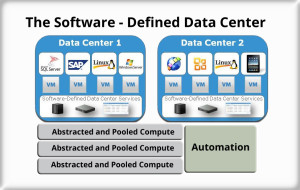 Embrace agility: More services, faster with more flexibility to support a diverse set of applications: This is inevitably the core requirement or key feature of a modernized IT set up that has IaaS service model and SDI is essentially positioned to address. As highlighted previously and experienced these days, Infrastructures are complex, and managing at the device level is quite a daunting task and also limiting. SDI helps to virtualize physical assets into something more flexible that allows IT service levels to be tailored to applications. Virtualization has got myriad of solution to offer that come under the ambit of SDI.
Embrace agility: More services, faster with more flexibility to support a diverse set of applications: This is inevitably the core requirement or key feature of a modernized IT set up that has IaaS service model and SDI is essentially positioned to address. As highlighted previously and experienced these days, Infrastructures are complex, and managing at the device level is quite a daunting task and also limiting. SDI helps to virtualize physical assets into something more flexible that allows IT service levels to be tailored to applications. Virtualization has got myriad of solution to offer that come under the ambit of SDI.
Automate Data protection: Data security threat is also increasing as IT solution is advancing. I have a separate blog on this topic. http:/www.techmanthan.com/index.php/2015/07/19/it-security-race-between-it-evolution-and-security-threat/. DEI stands for Data Encryption Infrastructure and IaaS must have to have the solution to protect data while addressing the following characteristics:-
- Redundant locations: Need to have minimum of two geographically separated deployment locations where components of the DEI are duplicated for redundancy; replication between the separated DEI keeps them synchronized.
- Front-end Processors (FEP): SDI must enable Infrastructure to have at least one FEP per location serving as the primary interface to applications requiring document-encryption and decryption services.
- Cryptographic Engines: The solution should have an ability to enforce cryptography solution by generating keys following the industry policies and best practices.
- Key Management Systems
- Identity and Access Management System
- Plaintext/Ciphertext Storage Locations
- Optional Encrypted Volumes.
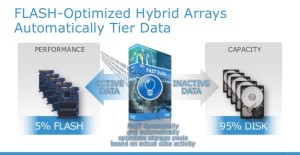 Moves active data to highest performing tier in real time: We have heard about FLAPE and FLOUD terminologies in the storage world!!! One is the combined form of FLASH and TAPE, and another is FLASH and CLOUD. Concept is the same, in which frequently used data should stay in FLASH drive for quick and easy access for faster delivery while rest can either go to the TAPE or CLOUD storage. SDI should have a component in the smart storage solution to move active data to the highest performing tier within seconds and even sub seconds. SDI constitutes solution like Active flash that detects the most active data and moves it to the upper echelons within the storage system for faster access.
Moves active data to highest performing tier in real time: We have heard about FLAPE and FLOUD terminologies in the storage world!!! One is the combined form of FLASH and TAPE, and another is FLASH and CLOUD. Concept is the same, in which frequently used data should stay in FLASH drive for quick and easy access for faster delivery while rest can either go to the TAPE or CLOUD storage. SDI should have a component in the smart storage solution to move active data to the highest performing tier within seconds and even sub seconds. SDI constitutes solution like Active flash that detects the most active data and moves it to the upper echelons within the storage system for faster access.
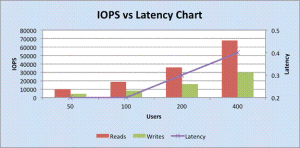 Responds to workload demands, improves performance: SDI should address tomorrows challenge in current solution framework. Advantage of software defined model is that Software drives infrastructure and underlying H/W. Rules and options to calibrate capacity (CPU, Storage, N/W Bandwidth, I/O etc.) can be parameterized and business driven. One of the key features of Cloud Computing set up is to enable Pay-as-you-Go model that is possible only when SDI encapsulate this while designing adequate architecture.
Responds to workload demands, improves performance: SDI should address tomorrows challenge in current solution framework. Advantage of software defined model is that Software drives infrastructure and underlying H/W. Rules and options to calibrate capacity (CPU, Storage, N/W Bandwidth, I/O etc.) can be parameterized and business driven. One of the key features of Cloud Computing set up is to enable Pay-as-you-Go model that is possible only when SDI encapsulate this while designing adequate architecture.
Access more data for better insights: SDI needs to give ability in the IaaS set up in the form of content platform or similar to sync and share data from anywhere. This helps addressing on going volume of data for analytics from Social media, IoT etc. This helps in breaking silos and store, share, synchronize, protect, preserve, analyze and retrieve data.
In the summary, I am attempting to highlight certain important elements that SDI (Software Defined Infrastructure) needs to address to help create a robust IaaS model. Software is essentially proven to be the vital IT component that can add flexibility to optimize, automate, regulate, mitigate and optimize the whole of Infrastructure offerings. It is undisputed that without software, Cloud, Virtualization, Software defined anything or everything model, encryption and many more in the IT landscape wouldn’t have been conceived or possible. Hope this article has helped to some extent to underscore the fundamentals behind software defined infrastructure (SDI). Please feel free to give comments and suggestions to further improvise my attempt towards enhancing IT awareness.